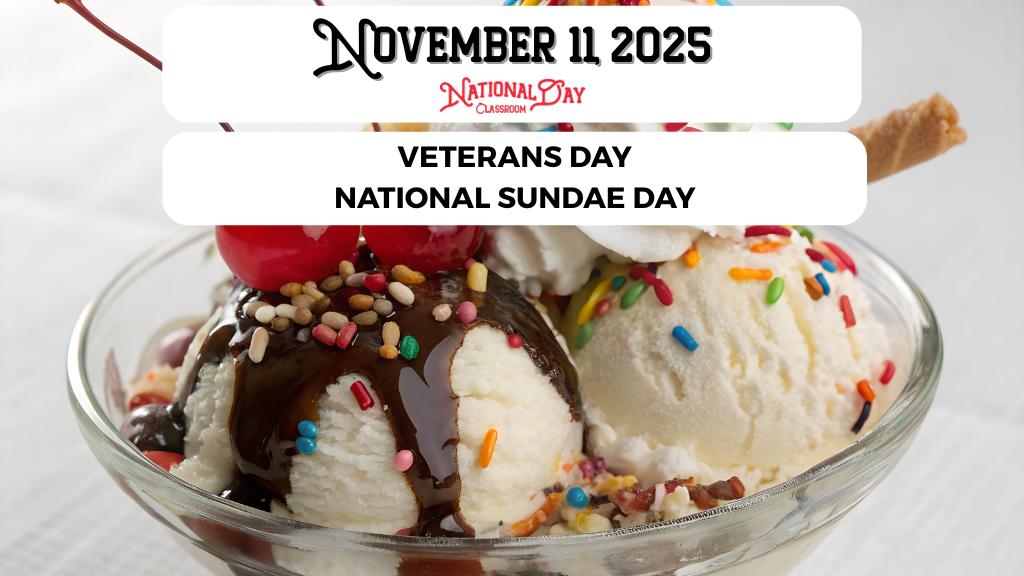
🕊️ From Armistice Day to Veterans Day
The origins of Veterans Day are rooted in Armistice Day, which commemorated the end of World War I.
- The Armistice: Major hostilities of World War I formally ended at the 11th hour of the 11th day of the 11th month in 1918, when an armistice (a temporary cessation of hostilities) with Germany went into effect. This date is generally regarded as the end of “the war to end all wars.”
- First Commemoration: A year later, in November 1919, President Woodrow Wilson proclaimed November 11th as the first commemoration of Armistice Day, intended to be observed with parades, public meetings, and a brief suspension of business beginning at 11:00 a.m.
- Official Holiday: In 1938, an act of Congress made November 11th a legal federal holiday dedicated to world peace and honoring veterans of World War I.
Honoring All Who Served
After World War II and the Korean War, it became clear that the holiday should honor all American veterans, not just those who served in World War I.
- The Change: In 1954, at the urging of veterans service organizations, the 83rd U.S. Congress amended the 1938 Act by striking out the word “Armistice” and inserting the word “Veterans.”
- Official Renaming: On June 1, 1954, President Dwight D. Eisenhower signed the legislation that officially changed the name to Veterans Day, making November 11th a day to honor American veterans of all wars.
- The Driving Force: A World War II veteran named Raymond Weeks from Birmingham, Alabama, is credited as the “Father of Veterans Day” for organizing “National Veterans Day” celebrations in 1947 and advocating for the national change.
📅 The Date Confusion and Return to November 11th
There was a brief period when the date of the holiday was changed.
- The Uniform Holiday Bill: In 1968, the Uniform Monday Holiday Act was signed into law, which moved the observance of four national holidays, including Veterans Day, to a Monday to ensure three-day weekends for federal employees. Veterans Day was moved to the fourth Monday in October, with the first observance under the new law occurring on October 25, 1971.
- Return to Tradition: However, many states and citizens did not agree with this change, recognizing the historical and patriotic significance of November 11th. In 1975, President Gerald R. Ford signed a law that returned the annual observance of Veterans Day to its original date of November 11th, beginning in 1978.
🎗️ Veterans Day vs. Memorial Day
It’s important to note the distinction between Veterans Day and Memorial Day:
- Veterans Day honors all who have served honorably in the U.S. Armed Forces—both living and deceased.
- Memorial Day specifically honors those who died while serving the country.
Today, the national ceremony for Veterans Day is held at the Tomb of the Unknowns at Arlington National Cemetery at 11:00 a.m. on November 11th.
🏛️ The National Veterans Day Observance
The most significant tradition takes place at Arlington National Cemetery in Virginia.
- The Time: The national ceremony commences precisely at 11:00 a.m. on November 11th, reflecting the moment the Armistice was signed in 1918 (the 11th hour of the 11th day of the 11th month).
- The Presidential Wreath: The President of the United States (or their representative) traditionally places a wreath at the Tomb of the Unknown Soldier (also known as the Tomb of the Unknowns). This is a monument dedicated to U.S. service members whose remains have not been identified from various wars.
- “Taps”: The wreath-laying ceremony is followed by the sounding of “Taps,” the bugle call played at U.S. military funerals and flag ceremonies.
- Memorial Amphitheater: Following the outdoor ceremony, a parade of colors by veterans’ organizations and an observance program, often including speeches and tributes, are held inside the Memorial Amphitheater.
🇺🇸 Community and Local Traditions
Across the nation, communities observe the day with local traditions that focus on celebrating living veterans:
- Parades: Many cities and towns host large Veterans Day Parades featuring veterans, active-duty military units, marching bands, JROTC students, and patriotic floats. These are a major public way to show support.
- School Assemblies: Schools often hold special assemblies where veterans are invited as guest speakers. This is an opportunity for students to meet and thank those who served and learn about their experiences.
- Moments of Silence: Even in the midst of celebrations, it is common and appropriate for a brief moment of silence to be observed at 11:00 a.m., acknowledging the historical significance of the time the fighting ended.
- Thanking Veterans: The most personal tradition is simply for citizens to thank a veteran they know, a family member, a neighbor, or someone they encounter in public. The day is primarily intended to honor and thank living veterans for their service and sacrifices.
- Flag Display: Americans are encouraged to fly the American flag proudly. Unlike Memorial Day, where the flag is flown at half-staff until noon, on Veterans Day, the flag is flown at full staff as a sign of celebration and honor.
Key Distinctions and Customs
- Veterans Day vs. Memorial Day: While both honor military service, Veterans Day is a day of celebration and appreciation for all who served, while Memorial Day is a day of solemn remembrance for those who died in service.
- Poppy Custom: The wearing of the red poppy is a custom more strongly associated with Memorial Day in the United States (and is used for Remembrance Day in Commonwealth countries) to honor the war dead, rather than Veterans Day.